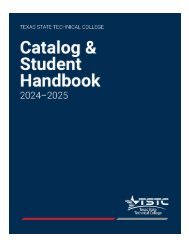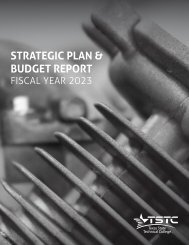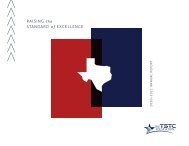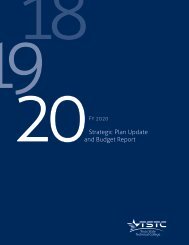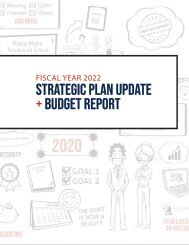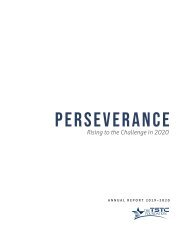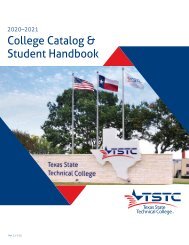You also want an ePaper? Increase the reach of your titles
YUMPU automatically turns print PDFs into web optimized ePapers that Google loves.
Higher Ed’s Response &<br />
Future Implications<br />
The COVID-19 p<strong>and</strong>emic <strong>and</strong> the related<br />
shutdown triggered disruption that had<br />
devastating consequences for much of higher<br />
education. Congress passed the Coronavirus<br />
Aid, Relief, <strong>and</strong> Economic Security (CARES)<br />
Act in response to the economic fallout of<br />
the COVID-19 p<strong>and</strong>emic in the United States.<br />
This Act disbursed $14 billion in aid to public<br />
colleges <strong>and</strong> universities, of which more than<br />
$6 billion was restricted to direct assistance to<br />
students.<br />
Public colleges <strong>and</strong> universities across the<br />
nation spent enormous sums of money to<br />
support their students through the p<strong>and</strong>emic;<br />
switch to online education; <strong>and</strong> issue refunds<br />
to students for parking, housing, <strong>and</strong> dining<br />
services for the period of time when they were<br />
not on campus in the spring. For many public<br />
colleges, these costs alone were much higher<br />
than the federal funding they would receive<br />
from the CARES Act.<br />
Beyond basic financial needs, the p<strong>and</strong>emic<br />
forced most colleges to exp<strong>and</strong> their online<br />
curriculum, for better or worse. Some simply<br />
for survival. As many private colleges moved<br />
more of their curriculum online to address social<br />
distancing requirements, students <strong>and</strong> parents<br />
began questioning whether the loss of the<br />
traditional on-campus ‘college experience’ will<br />
still be worth the hefty tuition.<br />
In each of the three previous recessions there<br />
was a spike in total community <strong>and</strong> technical<br />
college enrollments at the beginning of the<br />
recession. Younger, unskilled workers are<br />
typically among the first to lose their jobs<br />
in a recession, thus the jump in the youth<br />
unemployment rate can be viewed as a leading<br />
indicator <strong>and</strong> accelerant for the return-to-school<br />
movement.<br />
8<br />
STRATEGIC PLAN & BUDGET REPORT



